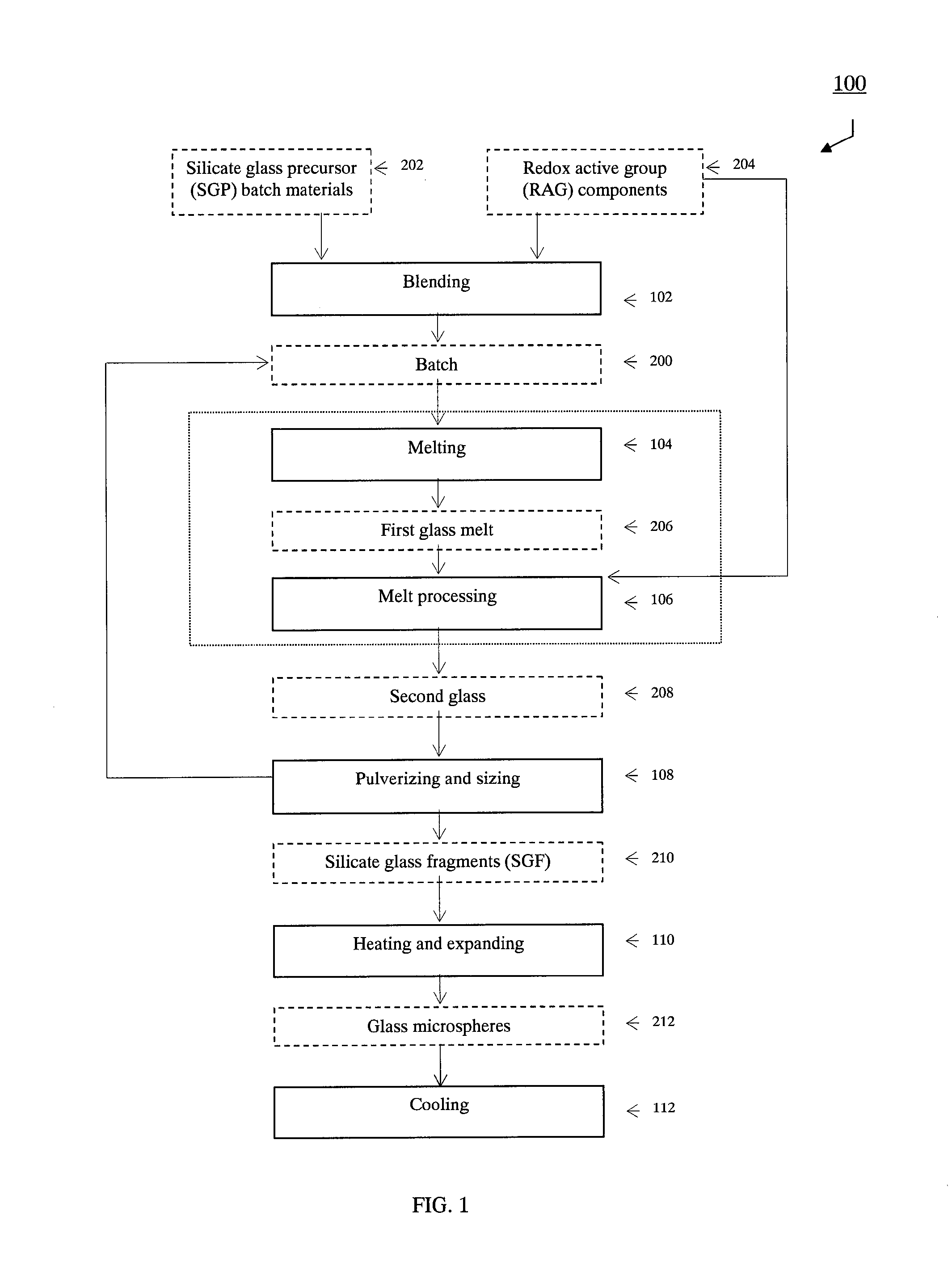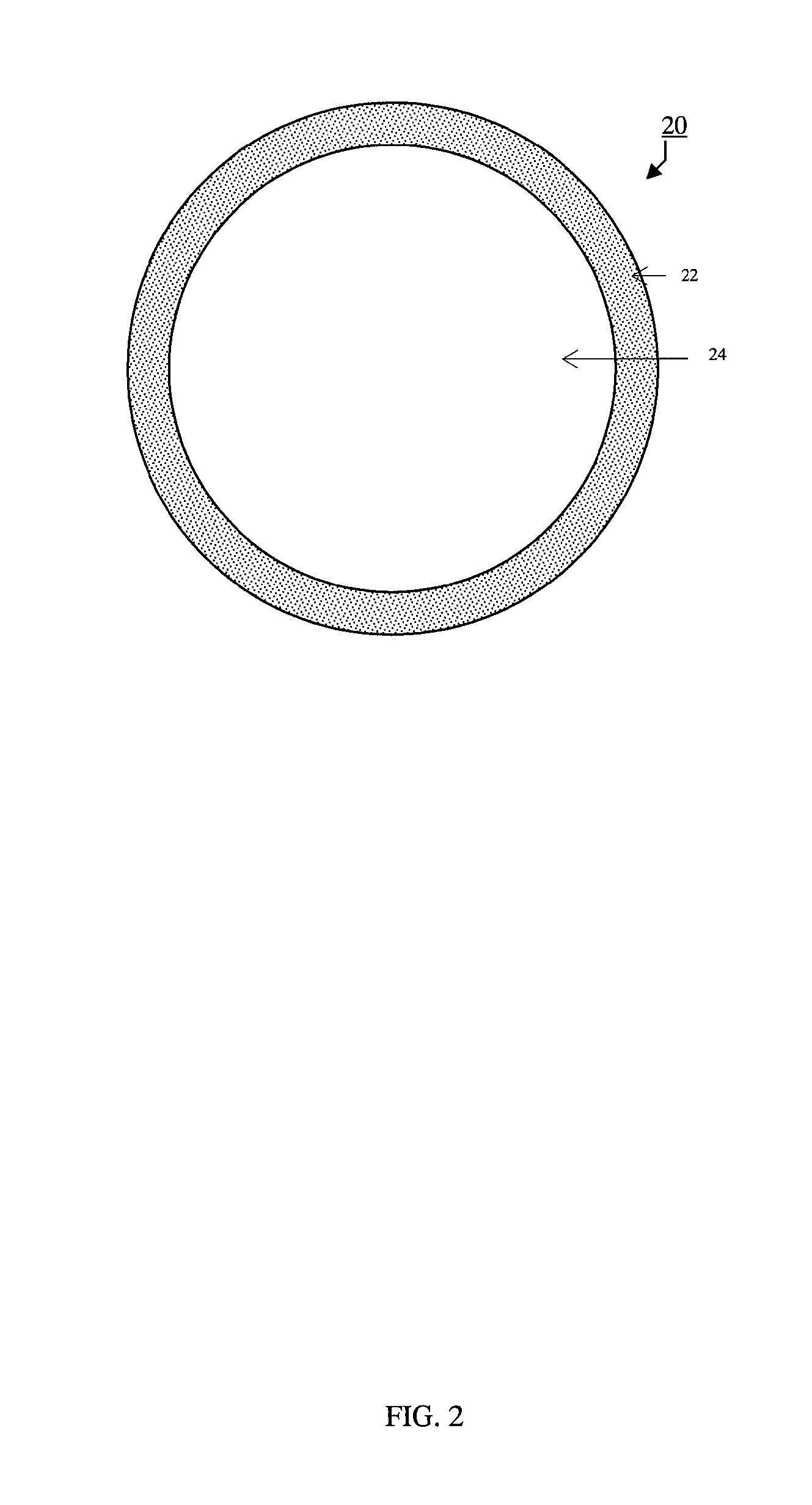Fluid permeable and vacuumed insulating microspheres and methods of producing the same
a technology of vacuum insulation, which is applied in the field of glass microspheres and methods of producing glass microspheres, can solve the problems of inability to manufacture microspheres and their methods of manufacture, inability to meet the needs of large-scale production, etc., to achieve superior fluid permeable glass microspheres, superior strength, and large surface area
- Summary
- Abstract
- Description
- Claims
- Application Information
AI Technical Summary
Benefits of technology
Problems solved by technology
Method used
Image
Examples
example 1
[0243]This example describes an embodiment of the present invention in which fly ash is used as a part of the batch 200. Additionally, the present example illustrates the embodiment of the present invention wherein the RAG components 204 are intrinsic and / or integral to the SGP raw materials 202.
[0244]Fly ash is an industrial byproduct that falls into the category of materials defined herein as “recovered materials”. ASTM C618 provides two types of fly ash classifications: Class F: SiO2+Al2O3+Fe2O3≧70%, and Class C: SiO2+Al2O3+Fe2O3≧50%. All in wt %.
[0245]The RAG components in fly ash comprise unburned carbon, which can vary from 0.2 to as high as 3.5 wt %, in addition to iron oxides, and sulfur compounds. Iron oxides are almost always present in fly ash, mostly in the form of magnetite (FeO+Fe2O3) and sulfur in the forms of sulfates, sulfites, or sulfides.
[0246]A typical class F fly ash, has less sulfur than a class C fly ash. The initial content of sulfur as sulfate in the flyash ...
example 2
[0255]In accordance with a further example of the present invention, a municipal waste incineration-ash, and / or a medical waste incineration-ash, is used as a part of the SGP raw materials. Silica flour is added in order to increase the silica content of the composite batch 200. As a part of the RAG components 204, gypsum is added to the batch 200 to adjust the sulfate content to achieve a prescribed chemical composition for the first glass melt 206. The resulting batch 200 is melted in the same type melter system that is employed in the Example 1. Hydrogen sulfide, with and without a carbonaceous RAG component 204, such as graphite is incorporated into the first glass melt 206 while in the melter system 300, in order to control the gas volume generated in the second glass melt 208 via the redox reactions while in the furnace. The first glass melt 206 is discharged from the melter system 300, cooled, and pulverized to form the silicate glass fragments 210. The newly formed silicate ...
example 3
[0256]In yet another example of the present invention, a vitrified low level radioactive waste material is treated as the second glass 208. The second glass 208 is a borosilicate-based glass. The solid pieces of the second glass 208 are pulverized and screened to obtain the desired silicate glass fragments 210. The silicate glass fragments are fired in a firing furnace that has suitable off gas treatment capabilities for radioactive gaseous and particulate emissions. The firing temperature is set around 1200-1400° C. The resulting radioactive glass microspheres 212 are chemically durable and stable. The radioactive glass microspheres may be used as a radiation source, for example in medical applications. In addition, the radioactive glass microspheres can be reused, and repackaged easily as a flowable solid material.
PUM
| Property | Measurement | Unit |
|---|---|---|
| particle density | aaaaa | aaaaa |
| pore diameter | aaaaa | aaaaa |
| particle density | aaaaa | aaaaa |
Abstract
Description
Claims
Application Information
 Login to View More
Login to View More - R&D
- Intellectual Property
- Life Sciences
- Materials
- Tech Scout
- Unparalleled Data Quality
- Higher Quality Content
- 60% Fewer Hallucinations
Browse by: Latest US Patents, China's latest patents, Technical Efficacy Thesaurus, Application Domain, Technology Topic, Popular Technical Reports.
© 2025 PatSnap. All rights reserved.Legal|Privacy policy|Modern Slavery Act Transparency Statement|Sitemap|About US| Contact US: help@patsnap.com



